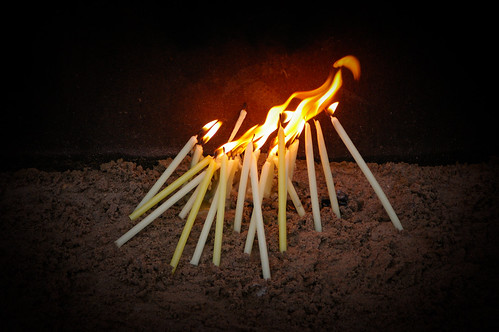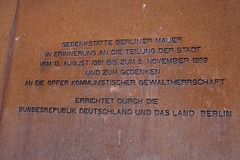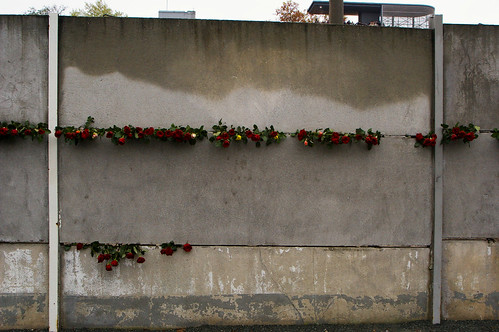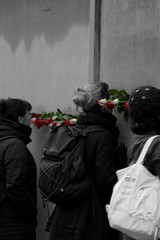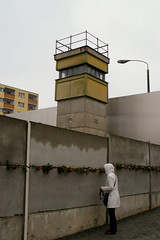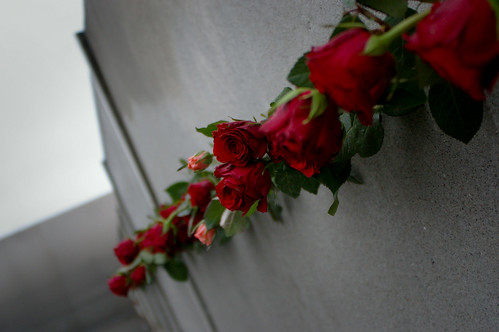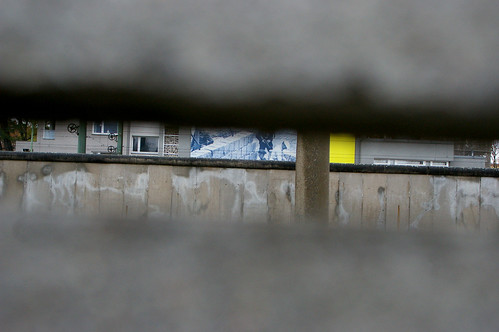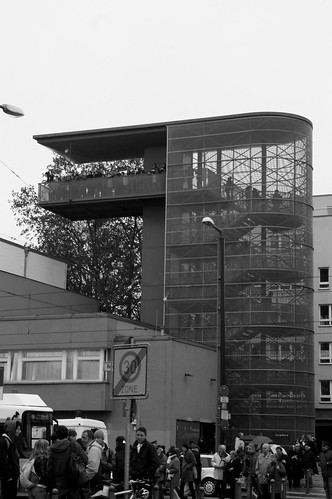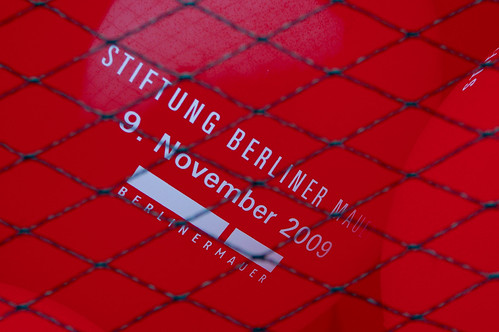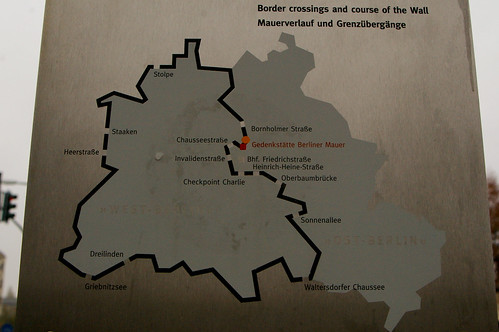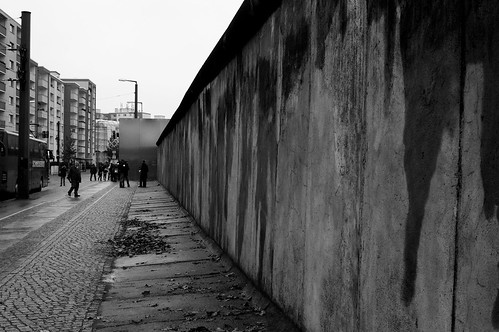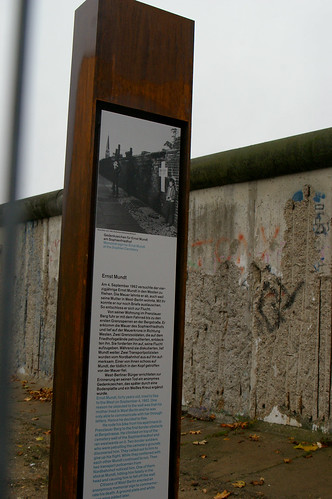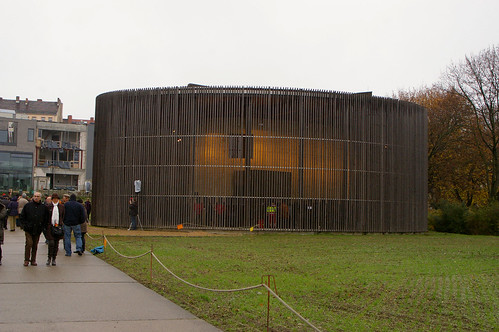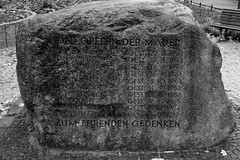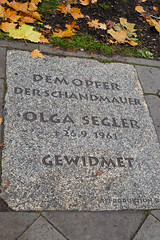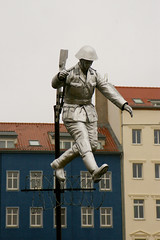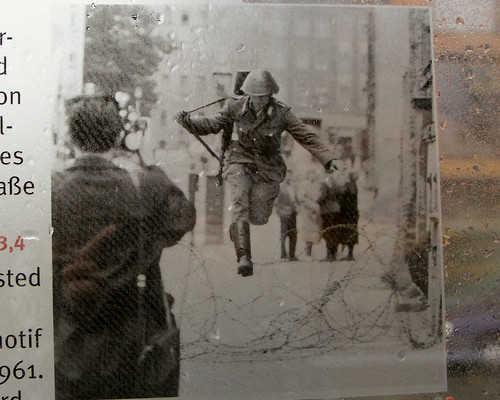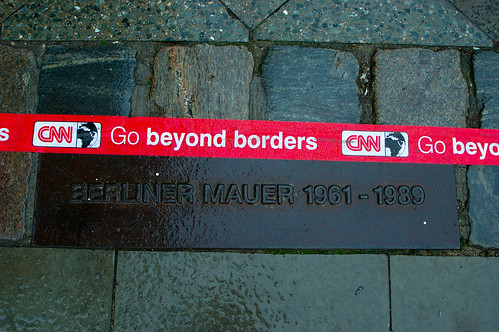
Angel and Girl statue, B&W in the rain, St. Sophia’s Cemetery, Berlin
* This is part of a series on the 20th Anniversary of the fall of the Berlin Wall – and my attempt to document the events of the weekend, where 20 years before, a peaceful revolution brought about a big change which helped to end the cold war, and bring about a new Europe. Many more of the events are in the full flickr set here. *
After visiting the commemoration service at the church of the reunification , wandering down Bernauer Strasse and back again, and photographing the roses at the wall (see previous posts) I had a little bit of time. Upon peeking over the fence behind me, I decided to take a few minutes (ok an hour and a half) and wander through theSt. Elisabeth’s cemetery and then into St. Sophia’s Cemetery – across the street. (Links to Flickr Sets behind each of the names.)
For me, photographing a cemetery isn’t that unusual – and somehow, I always seem to wind up in them in in the fall and winter. My feeling is that, there’s nothing quite like visiting a cemetery in the rain in autumn. The colors of the leaves and trees pop out, the lichen turn green, the moss and mushrooms are in full glory, and the statues somehow come to life just a bit more. Add to it the typical German gloomy gray skies, a few brilliant colored flowers, an awesome story, and you have a great photo opportunity that those less hearty don’t take advantage of.
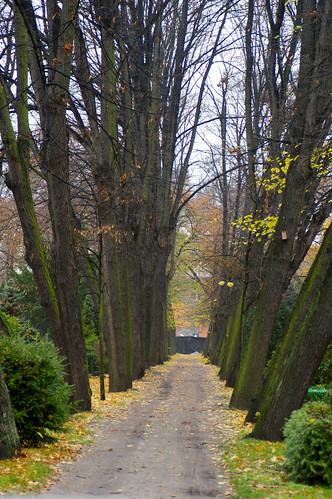
St.Sophia’s Cemetery Center Path, to the Berlin Wall (Bernauer Str.) at end
St Sophia’s Cemetery was established in 1827 and sits between Berg str, Bernauer str and Acker str. It’s now under a historical preservation order, and has some kind of protected status related to the graves and monuments there in. There’s graves of the deaconesses in the back, and Lazarus hospital is located on the west side (bernauer str) of the cemetery – where most of the ladies worked. In 1961, the Berlin wall was built along Bernauer str. (see previous post). Of course, initially, the Berlin wall was just the old brick cemetery wall. As time went on, however, and people jumped the wall to escape, the East German leadership ordered that the graves in the to be “no man’s land” be leveled down, the bodies moved (though it’s not clear if they really were – eg. St Hedwig’s cemetery they didn’t move the bodies just buried them under more dirt and concrete), and the death strip built on the former resting places. Visitors to the cemetery had to show a special “grave permit” if they wanted to visit a grave on the border side of the cemetery or forgo seeing the graves of their loved ones.

St. Sophia’s Cemetery Chapel
I’m not sure how many people actually come here to visit the former graves, while I was there in the rain, there were a few landscapers, a couple workmen doing some construction on a new grave (and the wall behind it) and several people on foot and even one on bike – cutting through the middle “street” rather than going around. I didn’t spend very long here (it started pouring) and want to go back in a bit better weather. As always a few photographs – here in small size – click to go to larger ones on the flickr site.
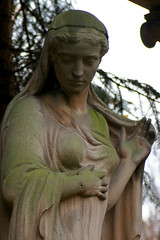
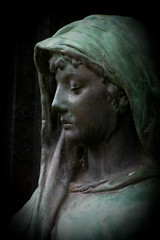
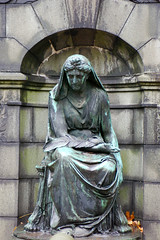
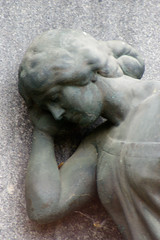
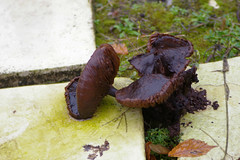
1) Veiled Statue -Grabs family monument
2) Veiled Copper Statue – Herfort Mausoleum
3) Seated Lady (w/red eyes) -Bechstein Graves
4) Crying woman – Zierau Family memorial
5) Mushrooms & Marble stones
And a few close-ups of the ornate workmanship
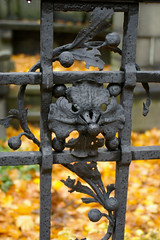
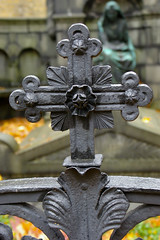
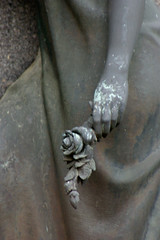
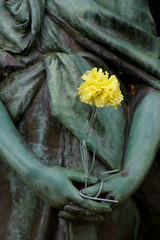
1) Berries and Flower Ironwork – Bechstein Graves
2) Sacred Cross / Rose Heart (large size you can see the spiderwebs) – Bechstein Graves
3) Female Hand and Rose – Zierau Family Memorial
4) Carnation in the Hand of Herfort Statue

